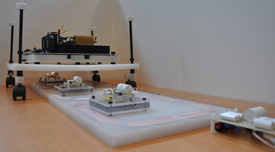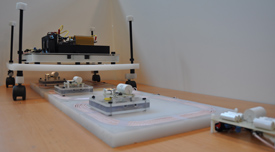November 29, 2013 – North Carolina State University (NCSU) researchers are onto something having developed simple electronic components that can be embedded in roadways to transmit a burst of power to any electric vehicle (EV) that passes over them.
I have written in the past about roadways implanted with piezoelectric devices and in some sense this works similarly but not in response to pressure. Because what the NCSU researchers have invented is a device that emits a weak magnetic field with no EV present but when a car equipped with a matching receiver passes by, the device triggers a strong magnetic impulse which delivers power the vehicle. The difference in field strength amounts to a 400% surge in the magnetic energy emitted. Once the EV passes the device reverts back to its weak signal.
The current laboratory prototype is a series of segmented transmitter coils with each broadcasting a magnetic charge at a rate of 0.5 kilowatts. A matching receiver coil in the EV makes the connection work efficiently. The NCSU team plan to scale up the system to generate a magnetic charge in the range of 50 kilowatts, about equivalent to fast charging direct current devices EV owners can install in their homes.
The paper describing their invention appears in the journal IEEE Transactions on Power Electronics.













